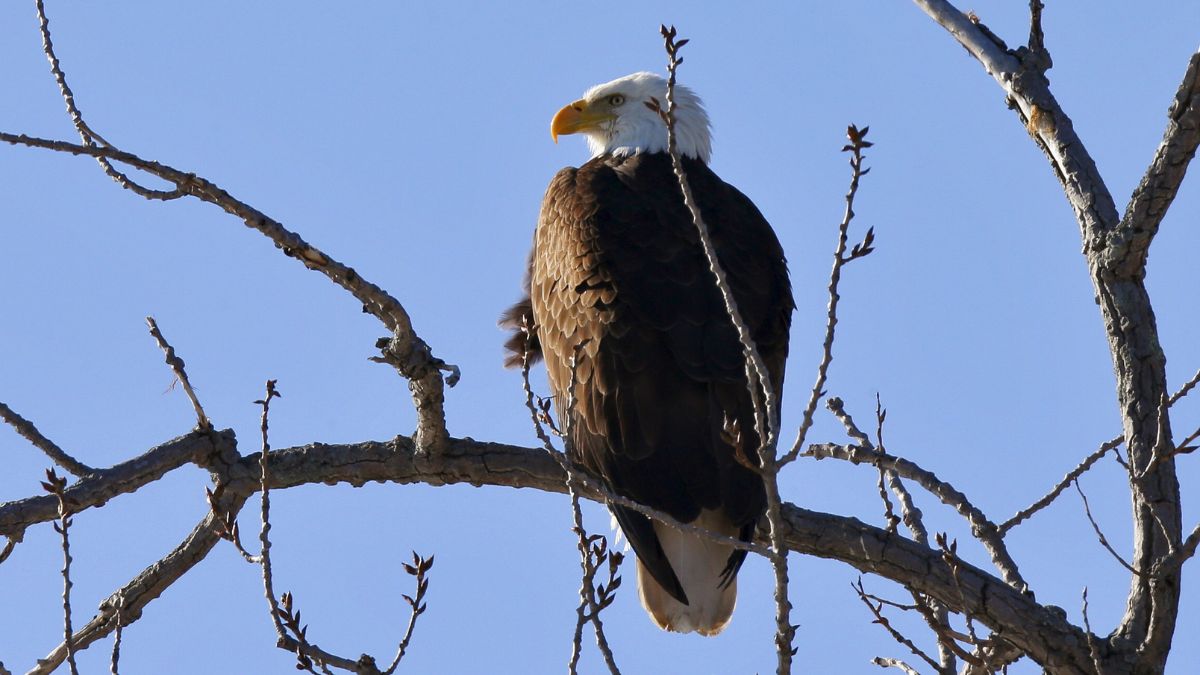The bald eagle has been synonymous with the United States for nearly two and a half centuries, its majestic figure gracing the Great Seal, military insignias, currency, and countless symbols of American patriotism.
Yet, astonishingly, it took until Christmas Eve 2024 for the bird to be officially designated as the country’s national bird. US President Joe Biden signed into law a bipartisan bill that corrected this historical oversight, marking a significant moment in American history.
The question that is being raised is why it took so long to bestow this honour upon a bird so deeply woven into the fabric of the America’s identity?
Why it took nearly 250 years
The bald eagle became a national symbol as early as 1782 when Congress approved the design for the Great Seal of the United States. The design depicted the bird clutching an olive branch and arrows in its talons, symbolising the nation’s capacity for both peace and defence.
The bald eagle’s native habitat, striking appearance, and perceived strength made it an ideal emblem for the fledgling nation. Despite its prominence in American iconography, Congress never legislated the bald eagle’s status as the national bird.
Most Americans assumed that the bird already held the distinction. “For nearly 250 years, we called the bald eagle the national bird when it wasn’t,” said Jack Davis, co-chair of the National Bird Initiative at the National Eagle Center. “But now the title is official, and no bird is more deserving.”
The oversight went unnoticed for centuries until Preston Cook, a Minnesota resident and avid bald eagle enthusiast, discovered the discrepancy. Cook, who has collected over 40,000 bald eagle-related items, stumbled upon the issue in 2010 while conducting research for a book.
He realised there was no legislative or presidential proclamation officially designating the bald eagle as the national bird. Alarmed, Cook began lobbying lawmakers, a process that spanned over a decade.
“It was a little bit of a challenge in the beginning because they wouldn’t believe me,” Cook said. “But after thorough research by legislative staff and archivists, they came to the same conclusion: The bald eagle had never been formally recognised as the national bird.”
With bipartisan support from legislators, particularly from Minnesota — home to one of the largest bald eagle populations in the country — the bill passed both houses of Congress without opposition. “Today, we rightfully recognise the bald eagle as our official national bird—bestowing an honour that is long overdue,” said Rep. Brad Finstad, one of the bill’s sponsors.
How the bald eagle was selected as a national symbol initally
The bald eagle was not an uncontested choice as a national symbol. Founding Father of the US, Benjamin Franklin famously objected to the bird’s inclusion on the Great Seal.
Writing to his daughter in 1784, Franklin described the bald eagle as “a bird of bad moral character,” criticising it for stealing food from other birds. Franklin championed the turkey, which he considered “a much more respectable bird, and withal a true original native of America.”
Despite Franklin’s objections, the bald eagle was chosen for its grandeur and its exclusive presence in North America. Charles Thomson, the secretary of Congress, recommended the bird for the Great Seal, replacing earlier proposals that featured a small white eagle.
Congress adopted Thomson’s design in 1782, cementing the bald eagle’s status as a symbol of American strength and resilience.
How the bald eagle survived endangerment
While the bald eagle has long symbolised strength and freedom, its own survival has been a testament to resilience and the power of conservation. By the mid-20th century, the bird was on the brink of extinction due to habitat loss, hunting, and the widespread use of the pesticide DDT. The chemical caused eggshells to thin, leading to reproductive failure.
In 1963, the population of nesting pairs in the lower 48 states dropped to an all-time low of 417. Alarmed by the decline, Congress passed the Bald Eagle Protection Act in 1940, making it illegal to kill, possess, or sell the birds. The 1972 ban on DDT further bolstered conservation efforts.
Thanks to these protections and the dedication of conservationists, the bald eagle population rebounded dramatically. By 2007, the species was removed from the Endangered Species List, and the US Fish and Wildlife Service estimated there were over 316,700 bald eagles in the contiguous United States as of 2020.
“This is a remarkable recovery story,” said Ed Hahn, communications director at the National Eagle Center. “It shows what we are able and willing to do when we truly value something.”
What the bald eagle means today in America
The formal recognition of the bald eagle as America’s national bird underscores the broader significance of protecting wildlife and natural habitats. Climate change, pollution, and urbanisation continue to pose challenges to the bird’s survival, even as its population remains stable.
“When we look at some of the issues facing other natural resources today, we can look again at our living national symbol,” Hahn said. “It shows the importance of acting decisively when something is important to us.”
The bird’s newfound legal status also highlights its cultural and ecological importance. Native to North America, the bald eagle has lived in harmony with Indigenous communities for generations, where it is revered as a sacred animal.
Today, the bird continues to inspire Americans, whether soaring over sporting events or nesting in urban areas like New York City and Washington DC.
“No one has to change anything; it’s just a correction,” Cook said of his successful campaign. “It is only a correction in history to make things right and make things the way they should be.”
For nearly 250 years, the bald eagle has represented the United States to the world.
With inputs from agencies
)